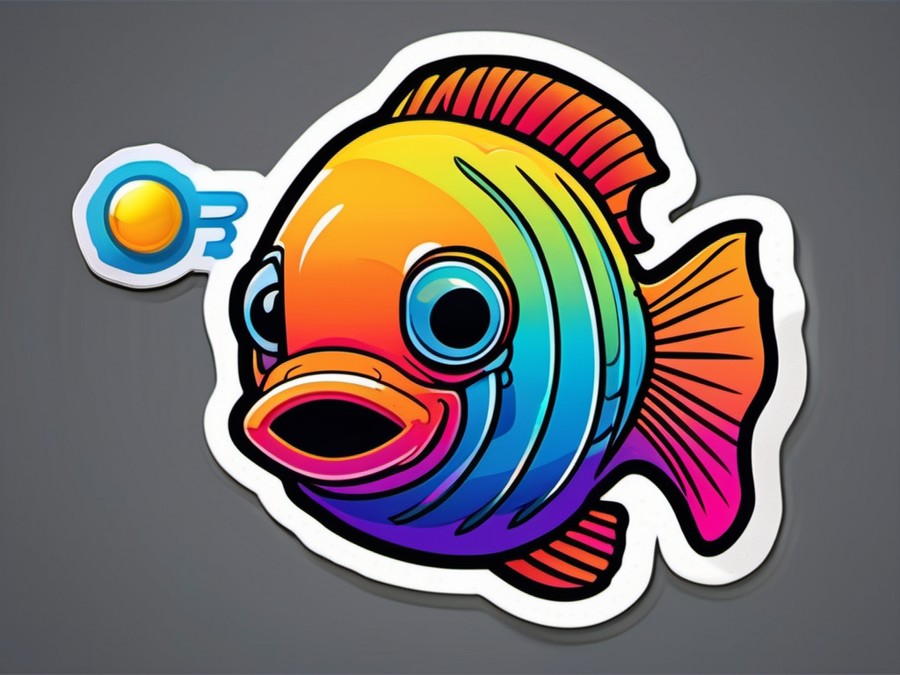· Charlotte Will · Fish Finders & Depth Finders · 8 min read
What is the Best Fish Finder for Ice Fishing?
Discover the best fish finder for ice fishing and enhance your winter angling adventures. Learn about key features, top recommendations, and tips for choosing and maintaining the perfect ice fishing fish finder.

Embarking on an ice fishing adventure can be a thrilling experience. The frozen landscape, the anticipation of catching that big one—it’s all part of the charm. But to really up your game, you need the right tools. One essential piece of equipment is a high-quality fish finder designed specifically for ice fishing.
Introduction to Ice Fishing and the Importance of a Fish Finder
Ice fishing is more than just a sport; it’s a unique challenge that combines the thrill of adventure with the strategic acumen needed to outsmart your quarry. A fish finder can be that secret weapon in your arsenal, helping you locate fish efficiently and maximize your chances of success.
What is the Difference Between a Fish Finder and a Depth Finder?provides a deeper understanding of how fish finders work and why they are crucial for any serious angler.
The Thrill of Ice Fishing
There’s something almost primal about standing on a frozen lake, drill in hand, ready to drop your line into the icy depths. The anticipation is palpable as you prepare for that first bite of the day. Adding a fish finder to your gear makes this experience even more rewarding by providing real-time data on what’s swimming beneath the ice.
How a Fish Finder Enhances Your Ice Fishing Experience
A good fish finder can take the guesswork out of where to drop your line. It uses sonar technology to detect fish, underwater structures, and even the terrain beneath the ice. This information is invaluable, helping you make strategic decisions about where and how to fish.
Understanding Fish Finders for Ice Fishing
Before diving into the specifics of what makes a great ice fishing fish finder, let’s break down the basics.
Basic Components of a Fish Finder
Transducer and Display Screen
The transducer is the part of the fish finder that sends out sonar signals and listens for their return. The display screen is where you’ll see the information gathered by the transducer. Together, they form the backbone of any fish finder system.
Types of Fish Finders
Wireless Fish Finders
These devices offer portability and convenience. They connect to your smartphone or tablet via Bluetooth, providing a wireless way to see what’s happening under the ice.
Portable Fish Finders
Designed for easy transport, portable fish finders are ideal for anglers who move from one spot to another frequently. They typically come with a carrying case and can be quickly set up and disassembled as needed.
Key Features to Look for in the Best Fish Finder
When selecting a fish finder for ice fishing, several key features can make or break your experience.
Display Screen and Resolution
The Importance of a Clear Display
A clear, high-resolution display is crucial. You need to be able to see what’s happening under the ice without any confusion or ambiguity. Look for a screen that is easy to read, even in low-light conditions.
What is Side Imaging on a Fish Finder? delves into the advanced features that modern fish finders offer, including side imaging, which can be incredibly useful for ice fishing.
Sonar Technology and Frequency
Dual-Frequency Sonar vs. Single-Frequency Sonar
Dual-frequency sonar sends out two different sonar frequencies, offering a more comprehensive view of what’s beneath the ice. This can be particularly helpful in distinguishing between fish and other underwater structures.
GPS and Mapping
The Advantage of Having a Built-In Map
GPS capabilities and built-in maps can be game-changers. They allow you to mark hotspots, track your locations, and even plot a course if you’re fishing on a larger body of water.
Battery Life and Durability
Lasting Power in Cold Conditions
Cold weather can be tough on electronics, so durability is key. Look for a fish finder with a long battery life and the ability to withstand freezing temperatures.
Top Recommendations for the Best Fish Finder for Ice Fishing
With so many options on the market, narrowing down the best fish finder for ice fishing can be challenging. Here are a few top recommendations:
Garmin Striker Plus 4 with Portable Kit
Key Features and Benefits
The Garmin Striker Plus 4 comes with a portable kit, making it easy to set up and transport. It features ClearVü scanning sonar, which provides nearly photographic images of what’s below your boat. The built-in GPS allows you to mark waypoints and create maps of your favorite fishing spots.
Humminbird Ice 55
Key Features and Benefits
The Humminbird Ice 55 is specifically designed for ice fishing. It features a large, easy-to-read display and dual-frequency sonar that can reach depths of up to 200 feet. The ice mode transducer is encased in a floater, making it easy to spot and retrieve.
Deeper PRO+
Key Features and Benefits
The Deeper PRO+ is a wireless fish finder that connects to your smartphone or tablet via Bluetooth. It’s highly portable and can be cast out like a lure, providing real-time sonar data directly to your device. The PRO+ has a built-in GPS and can create detailed bathymetric maps of the underwater terrain.
How to Choose the Right Fish Finder for Your Needs
With so many factors at play, choosing the right fish finder can be daunting. Here are a few tips to help you make an informed decision.
Budget Considerations
Best Fish Finders Under $200
If you’re on a budget, there are still plenty of excellent options available. Look for fish finders that offer essential features like clear displays, good battery life, and reliable sonar technology.
Specific Requirements
Portable vs. Fixed Fish Finders
Consider your specific needs. If you plan on moving from one spot to another frequently, a portable fish finder might be the best choice. If you prefer to set up in one location and stay put, a fixed fish finder could be more suitable.
Tips for Using Your Fish Finder Effectively
Having a great fish finder is just the beginning. To truly make the most of your investment, you need to know how to use it effectively.
Setting Up Your Fish Finder
Proper Placement and Calibration
Setting up your fish finder involves more than just dropping the transducer into the water. Proper placement and calibration are crucial for accurate readings. Be sure to follow the manufacturer’s instructions for the best results.
Reading the Display
Understanding Fish Arches and Structure
Learning to read the display on your fish finder is an essential skill. Fish arches, structure, and other indicators can tell you a lot about what’s happening under the ice. Take some time to familiarize yourself with these signals, and you’ll be well on your way to becoming a fish finding pro.
Maintenance Tips to Ensure Longevity
To keep your fish finder in top condition, regular maintenance is key.
Cleaning the Transducer
Keep It Clear for Accurate Readings
Regularly clean the transducer to remove any buildup or debris that could affect its performance. A clean transducer ensures accurate readings and prolongs the lifespan of your fish finder.
Proper Storage Techniques
Protect Your Investment
When not in use, store your fish finder properly to protect it from the elements. This can include using a carrying case or covering your device with a protective sleeve.
Common Misconceptions About Fish Finders
There are many myths and misconceptions surrounding fish finders. Let’s address a few of the most common ones.
Debunking Myths About Fish Finder Accuracy
They Are Not Infallible
While fish finders are powerful tools, they are not infallible. Environmental factors and user error can both affect their accuracy. It’s important to understand the limitations of your fish finder and use it in conjunction with other fishing techniques.
Conclusion
Choosing the best fish finder for ice fishing involves considering a range of factors, from features and budget to specific needs and maintenance requirements. Whether you opt for a wireless model or a more traditional setup, the right fish finder can significantly enhance your ice fishing experience.
So, get out there and make the most of your next ice fishing adventure with the perfect fish finder by your side. Tight lines!
FAQs
How Does a Fish Finder Work on Ice?
A fish finder emits sonar signals that bounce off objects under the ice, including fish and structures. The device then interprets these returned signals to provide you with an image of what’s beneath the surface.
Can I Use a Regular Boat Fish Finder for Ice Fishing?
While it is possible to use a regular boat fish finder for ice fishing, these devices may not be as effective or convenient. Ice-specific fish finders are designed to withstand cold temperatures and offer features tailored to ice fishing conditions.
What is the Best Way to Maintain My Fish Finder in Cold Weather?
To maintain your fish finder in cold weather, ensure that you keep the transducer clean and store your device properly when not in use. Additionally, follow any specific instructions provided by the manufacturer for cold-weather maintenance.
How Accurate are Fish Finders for Identifying Different Species of Fish?
Fish finders can provide a good indication of the presence and size of fish, but they may not be able to accurately identify the species. Advanced models with more sophisticated technology can offer better species identification, but they are not foolproof.
Are There Any Additional Accessories I Should Consider for Ice Fishing with a Fish Finder?
Yes, there are several accessories that can enhance your ice fishing experience with a fish finder. These include carrying cases, protective sleeves, and transducer floats or mounts that make it easier to retrieve and position your device.
Stay warm and happy fishing!




